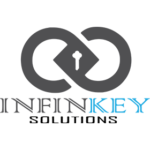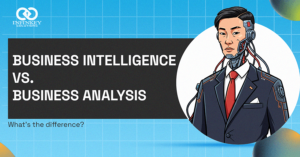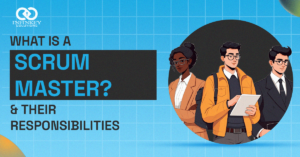Being Agile vs Doing Agile
In the last two decades, workplaces around the world have undergone a noticeable shift—not just in the tools they use, but in how teams think, plan, and operate. This change has been largely driven by the increasing demand for adaptability in business environments. Customers expect faster solutions. Market conditions change quickly. And competition is constant.

A new way of working has gained ground in response to this reality: Agile. Agile isn’t just a framework or a method, it represents a different mindset. A mindset that embraces change, values collaboration, and focuses on delivering value early and often.
Agile has found its place across industries. While it originated in software development, it’s now applied in marketing teams, product development, education, and even in large-scale organizations that once relied on rigid corporate structures. What makes Agile effective is its simplicity in concept and its power in execution. It brings people together around shared goals and encourages constant learning and improvement.
Evolution from Traditional to Agile
Before Agile, most organizations followed what is often called a Waterfall model. This traditional project management style was highly structured. Work was planned, detailed from start to finish, and followed a strict sequence.
At first glance, this model seems logical. Everything is documented, timelines are clear, and there’s a strong sense of control. But in practice, it had several serious limitations.
The biggest issue was inflexibility. Once the planning phase was complete, there was little room for change. If a client’s needs changed halfway through the project, adjusting would be difficult and costly. Lean Management in Healthcare | Reducing Waste and Improving Patient Care
Secondly, the feedback came too late. Since the product was only shown after completion, issues were often discovered when it was too late to fix them efficiently. Months of work could go to waste because assumptions made at the beginning no longer hold.
Also, this model placed too much focus on documentation and processes, and not enough on outcomes. Success was often measured by whether the plan was followed, not whether the product was valuable or usable.
From Plans to Adaptability
Agile was born as a response to the problems of the traditional approach. Instead of treating change as a problem, Agile accepts it as a natural part of any meaningful project.
What truly sets Agile apart is its focus on people over processes. Teams are encouraged to collaborate closely, communicate openly, and prioritize the needs of the customer.
Instead of asking: “Are we following the plan?”, Agile teams ask: “Are we building the right thing, in the best way, at this moment?”
So, Why is Being Agile So Crucial Nowadays?
Below, we explore the three key forces that make agility a non-negotiable strength in today’s work culture.
Market Demands and Rapid Changes
Businesses today operate in highly dynamic markets. What works today might be obsolete tomorrow. Trends evolve overnight, new technologies emerge every quarter, and global events can reshape entire industries within weeks.
In such a climate, organizations can no longer afford to spend months planning something only to find out it’s no longer relevant by the time it’s ready. Traditional models don’t keep up with this pace. Agile, on the other hand, is designed for exactly this kind of volatility. Web Developer or Software Engineer? Comparing Skills, Pay, and Job Outlook
Being agile allows companies to:
- Respond to market signals quickly without reworking the entire strategy.
- Test new ideas at low cost, reducing the risk of large-scale failures.
- Adjust priorities in real-time, based on what’s most valuable at any given moment.
Innovation and Speed to Market
Innovation has become the currency of competitiveness. Companies that launch faster, learn faster, and improve faster tend to outperform those that move slowly, even if the slower companies are more precise.
Agile creates a structure where innovation is built into the workflow. By working in short cycles and continuously gathering feedback, teams don’t wait until the end to realize what works—they learn along the way. This reduces waste and speeds up discovery.
Let’s consider two scenarios:
| Company A (Traditional) | Company B (Agile) |
| Spends 6 months building | Builds a testable version in 3 weeks |
| Launches only after full development | Delivers updates every 2 weeks |
| Learns from post-launch feedback | Learns continuously from early users |
It’s easy to see which company is more likely to build something relevant, timely, and impactful.
Customer-Centric Approaches
Customers today expect more than just a product—they want experiences that fit their needs and evolve with them. A rigid system that delivers based on outdated assumptions rarely meets these expectations.
Agile places the customer at the center of every decision. Instead of delivering based on what was initially agreed upon, Agile teams ask: “What does the customer need now?”
This approach leads to:
- More meaningful engagement with customers throughout the development process
- Greater alignment between product features and real user problems
- Stronger trust among customers sees continuous improvement and responsiveness
Being Agile
Being Agile isn’t simply about following a specific framework like Scrum or Kanban. It’s not about using sticky notes, holding stand-up meetings, or having sprint deadlines. Those are just tools.
At its core, being Agile is a mindset, a way of thinking, working, and responding to change that’s centered around flexibility, collaboration, and continuous learning. To “be Agile” means to build an organization that is quick to adapt, open to feedback, and always looking to improve, not because it’s required, but because it’s part of the culture. How Agile is Your Team? Guide for Agile Teams and Methodologies
Let’s break down what this looks like in action:
What’s an Agile Mindset?
You can follow every Agile rule, run sprints on time, and have the right tools in place—but without the right mindset, it’s just routine. Agile is not just something you do; it’s something you believe in and practice daily.

Embracing Change as a Constant
“Change isn’t the exception in Agile—it’s the rule.”
People with an Agile mindset don’t treat change as an interruption. They see it as a natural part of growth and progress.
Instead of getting frustrated when plans shift, they ask:
“What does this change teach us?”
“How can we adjust and still move forward?”
They adapt quickly not by abandoning structure, but by remaining flexible within it.
Focusing on Value Over Volume
Agile thinkers don’t get caught up in just doing more, they care about doing what matters most.
They constantly ask:
- Is this task aligned with the customer’s needs?
- Will this effort move us closer to the goal?
- Are we solving a real problem or just being busy?
Welcoming Feedback and Learning Fast
An Agile mindset views feedback not as criticism, but as a gift. Every piece of input is a chance to make the product, the process, or even oneself better.
Agile teams encourage open dialogue and even go looking for feedback, whether it’s from users, team members, or stakeholders. It helps them:
- Spot blind spots early
- Adjust direction before it’s too late
- Improve with each iteration
Collaboration Over Control
The Agile mindset believes the best ideas don’t always come from the top—they can come from anyone.
Agile thinkers:
- Share progress transparently
- Work across roles and departments
- Value diverse perspectives over rigid hierarchies
It’s not about who’s in charge, it’s about how we solve the problem together.
Continuous Improvement is a Habit, Not a Phase
Agile is never “done.” Whether it’s refining a workflow, simplifying a process, or upgrading a product feature, Agile teams are always scanning for ways to do better.
“There’s no ‘perfect’—only progress.”
This habit of constant reflection and adjustment builds stronger, smarter teams over time.
Doing Agile vs. Being Agile
A lot of teams say they’re “Agile” because they run daily standups, use Jira, or work in two-week sprints. That’s doing Agile, following the methods and rituals.
But here’s the catch:
You can do all of that and still not be Agile.
Agile is a mindset, not a to-do list.
Many companies fall into the trap of treating Agile like a process they can install instead of a culture they need to build. That’s when things start looking good on paper but feel frustrating in practice.
Doing Agile: Frameworks, Rituals & the Mechanics
Agile, at its surface, looks like a set of tools, frameworks, and roles. And while those are essential components, they’re just the visible part of what Agile truly is.
Let’s explore how teams do Agile through common structures and practices, and then we’ll circle back to how these practices often miss the mark when the mindset isn’t there.
Popular Agile Frameworks
Agile isn’t a one-size-fits-all formula. Instead, it offers multiple frameworks that teams can choose based on their needs. The most common ones include:
| Framework | Description | Best For |
| Scrum | Work is broken into sprints (usually 2 weeks). Teams work cross-functionally with defined roles like Scrum Master and Product Owner. | Projects with evolving goals and regular releases. |
| Kanban | Visualizes work using boards (columns: To-Do, In Progress, Done). Focus is on flow and limiting work-in-progress. | Continuous delivery, service teams, or maintenance tasks. |
| Lean | Emphasizes waste reduction, fast feedback, and continuous improvement. | Organizations aiming for efficiency and customer value. |
| XP (Extreme Programming) | Focuses on engineering practices like pair programming, test-driven development (TDD), and frequent releases. | Software teams needing high code quality. |
Agile Ceremonies and Artifacts
Agile teams use certain recurring practices (ceremonies) and work outputs (artifacts) to stay aligned and productive.
Common Ceremonies:
- Daily Stand-up: Quick check-in meeting to share progress and blockers
- Sprint Planning: Decide what to deliver in the upcoming sprint
- Sprint Review: Demo what was built and gather feedback
- Retrospective: Reflect on what went well and what needs improvement
Common Artifacts:
- Product Backlog: List of desired features or changes
- Sprint Backlog: Tasks selected for the current sprint
- Burndown Chart: A Visual showing work left in a sprint
Agile Tools and Technology
There’s no shortage of tools designed to help teams manage Agile workflows. But tools are just means to an end, not the end itself.
| Tool | Purpose |
| Jira / ClickUp / Trello | Task and sprint tracking |
| Miro / MURAL | Visual collaboration, retros, planning |
| Slack / Microsoft Teams | Real-time communication |
| Git / GitHub / GitLab | Code collaboration & version control |
| Confluence / Notion | Shared knowledge base, documentation |
Examples of Doing but Not Being Agile
Now that we understand how teams “do” Agile, let’s look at what happens when they miss the essence behind these practices.
Daily Standups Without True Collaboration
Teams gather every morning for standups, but instead of engaging conversations, each member simply reads out their task list and then goes quiet. There’s no meaningful dialogue, no shared problem-solving, and no sense of teamwork.
Daily standups should go beyond routine, they should be about identifying blockers, aligning as a team, and actively supporting each other’s progress.
Agile Tools Without an Agile Mindset
Jira, Trello, and other tools are in place with tasks neatly organized and sprint boards set up. However, adjusting priorities becomes a bureaucratic process requiring multiple approvals. Team feedback is often dismissed, and deadlines are imposed from the top down with little flexibility.
Simply using agile tools doesn’t make a team agile. It’s the mindset—embracing change, valuing feedback, and adapting quickly- that defines real agility.
Sprint-Based Execution with Waterfall Thinking
While the team claims to work in sprints, everything is planned out months in advance with little room to pivot. When plans go off track, the team is blamed for not following the original roadmap.
True agility means creating flexible plans that adapt to real-time feedback and shifting priorities, not just breaking down waterfall plans into two-week cycles.
Retrospectives with No Real Outcomes
Retrospectives are held regularly at the end of each sprint, but they feel more like a checkbox than a chance to improve. The same challenges resurface sprint after sprint, with no meaningful action or changes implemented.
An agile team learns from its processes. Retrospectives should lead to actual improvements, not just repeated conversations.
Moving Fast Without Direction
Tasks are completed quickly, and work appears to be progressing at a rapid pace. However, there’s little clarity on whether the delivered features truly matter to users or align with the product’s goals.
Agility isn’t just about speed, it’s about moving with purpose, prioritizing customer value, and staying aligned with the broader mission.
So, What’s Missing?
When teams focus too much on doing Agile, they miss the why behind it:
| Doing Agile | Being Agile |
| Following rituals | Living the values |
| Using the tools | Embracing the mindset |
| Checking boxes | Delivering meaningful value |
| Acting busy | Adapting and improving |
Agile is not what you do. It’s how you think, how you learn, and how you adapt.
The difference might not show up immediately in the schedule, but it’ll show up in team morale, product quality, and long-term progress.
Warning Signs You’re Not Even Doing Agile
Many teams think they’ve adopted Agile just because they’ve started using new tools or renamed their meeting,s but the signs of not even doing Agile properly are easy to spot once you know what to look for.
Here are the most common red flags:
- Still Using Big Upfront Plans with No Flexibility
- No Working Product After Several Weeks
- No Real Retrospectives or Action from Them
- Command-and-Control Leadership Still Exists
- User Feedback is an Afterthought (or missing)
- You’re Using Agile Terminology without Changing Behaviours
- You’re Obsessed with Velocity Instead of Value
Quick Self-Check Table
| Symptom | Not Doing Agile If… | Instead, Agile Means… |
| Planning | Plans never change | Plans evolve constantly |
| Delivery | No working product for weeks | Working software early & often |
| Retrospectives | No reflection or improvement | Continuous learning & adjusting |
| Leadership | Tasks dictated top-down | Empowered, self-organizing teams |
| Feedback | Users are only involved at the end | Feedback is frequent and ongoing |
| Language | Just using Agile terms | Changing team behaviours and habits |
| Metrics | Focus on how fast | Focus on how valuable |
The Cost of Fake Agility
Just calling your process “Agile” doesn’t make it truly Agile. Many teams today fall into the trap of fake agility, where they appear to adopt Agile methods on the surface. However, underneath, they’re still operating with rigid, outdated ways of working.

Slower Delivery – Despite “Speedy” Frameworks
Fake Agile gives the impression of speed and productivity, but beneath the surface, the core issues remain unchanged. Decision-making is still centralized, often requiring approval from higher-ups, which slows down progress and creates bottlenecks in development. As a result, teams appear to be completing tasks, yet these efforts do not contribute meaningfully to actual outcomes. The work gets done on paper, but the real value, delivering tangible results to users or stakeholders, remains elusive. This disconnect between activity and impact highlights the superficial nature of Fake Agile practices.
Wasted Resources
Projects often drag on without receiving meaningful feedback, leading to a significant waste of developer time, financial resources, and stakeholder energy. In the absence of genuine iteration, teams continue to build features that ultimately serve no purpose; either they go unused or were never truly needed in the first place. This lack of direction and responsiveness results in inefficiency and missed opportunities to create real value.
Burnout and Frustration
When Agile is perceived as just another passing management trend, team members begin to grow cynical and detached. The frequent ceremonies, stand-ups, retrospectives, and planning sessions can start to feel like hollow rituals when they lack clear purpose or tangible outcomes. Over time, this leads to disengagement and fatigue. As trust in the process erodes, teams lose their sense of ownership and connection to the product. When that happens, they no longer feel invested in delivering quality or innovation, and the entire development effort suffers.
Stakeholder Mistrust
When the promised agility fails to produce visible progress, stakeholders inevitably begin to lose confidence. They start to question not only the team’s credibility but also the effectiveness and value of Agile as a whole. The lack of tangible results breeds doubt, and what was once seen as a forward-thinking approach may be dismissed as ineffective or poorly implemented. This erosion of trust can stall momentum and jeopardize future support for Agile practices within the organization.
Lack of Innovation
Fake agility often preserves traditional hierarchies, tight control, and a pervasive fear of failure. In such environments, teams become reluctant to take risks or explore new approaches. Instead of experimenting and iterating freely, they stick to what feels safe and familiar. This cautious mindset stifles creativity, resulting in stale ideas and sluggish innovation. Without the freedom to fail and learn, progress slows and true agility remains out of reach.
How to Shift from Doing to Being Agile
“Doing Agile” is about following methods.
“Being Agile” is about living the mindset.
The shift doesn’t happen overnight, and it doesn’t happen by adding more stand-ups or sprint boards. It happens through intentional cultural change, leadership evolution, and team maturity.
Let’s explore how to truly move beyond rituals and embrace the real spirit of agility.
Start with Purpose, Not Process
Agile isn’t a to-do list, it’s a response to complexity and rapid change. If you’re adopting Agile just to check boxes, you’re missing the point. Blindly copying another team’s structure or tools without understanding the context behind their success can lead to misalignment and frustration. Every team faces different challenges, and what works for one may not work for another.
Instead, Agile should begin with thoughtful questions: What problem are we trying to solve? What kind of change are we truly ready to embrace?
Shift Mindsets Across the Organization
Teams need to move away from the rigid mindset of “build what we planned” and instead embrace a more fluid approach: “learn and adapt as we build.” This encourages continuous feedback, real-time learning, and faster alignment with user needs.
Leaders, in turn, must transition from simply managing people to enabling them, creating environments where teams feel empowered to make decisions, experiment, and grow.
Redefine Success Around Learning and Value
Agile redefines success as learning and delivering real value, not just following a plan. It replaces the illusion of certainty with the power of discovery.
Instead of asking, “Did we finish the sprint?”, ask: What did we learn? What did the customer gain? What should we try next?
Success is no longer about predictability; it’s about continuous improvement and meaningful outcomes.
Create Safe Spaces for Experimentation
Teams can’t truly be Agile if they’re afraid to take risks. Creating psychological safety is essential—team members need to feel comfortable admitting when something isn’t working.
Encourage small experiments and treat failure as a chance to learn, not something to punish.
Agile thrives when teams celebrate insights and growth, not just completed tasks.
Let Teams Own the “How”
Being Agile means empowering teams with autonomy rather than controlling how they work. It’s about trusting them to organize their processes, select the right tools, and continuously inspect and adapt. Leaders should focus on setting clear goals, not prescribing every step. Instead of a “command and control” approach, success comes from offering clarity and coaching to help teams thrive.
Make Feedback Loops Non-Negotiable
Without feedback, agility can’t exist. It must be built into every part of the process—design, code, releases, and team interactions. Retrospectives should be used for honest reflection and growth, not blame. Real agility means actively listening to users, communicating openly within the team, and making meaningful changes based on what we learn.
Evolve Beyond the Framework
Scrum, Kanban, and SAFe are tools to guide teams, not the end goal. While frameworks provide structure, Agile itself isn’t defined by any one of them. As teams grow and gain experience, they naturally adapt and evolve their ways of working to fit their unique context. Doing Agile means following a playbook; being Agile means creating your own as you learn and grow.
From Doing to Being: A Quick Comparison
| Trait | Doing Agile | Being Agile |
| Focus | Process & delivery | Mindset & outcomes |
| Leadership style | Directive | Coaching & enabling |
| Feedback | Event-based | Continuous |
| Team behavior | Compliance | Ownership |
| Failure | Avoided | Learned from |
| Value | Measured in velocity | Measured in impact |
Conclusion:
Agile is more than just a set of tools, frameworks, or scheduled meetings, it is a mindset rooted in adaptability, collaboration, and continuous value delivery. As today’s work environments become increasingly dynamic and customer expectations evolve rapidly, organizations must shift from rigid planning to flexible execution. The true power of Agile lies not in how well teams follow routines, but in how effectively they embrace change, learn from feedback, and stay focused on creating real impact. Being Agile is about building a culture that values people, welcomes uncertainty, and never stops improving. In this fast-paced world, it’s not just a competitive advantage, it’s a necessity.
Ready to transform your team from doing Agile to truly being Agile? Stop following frameworks—start leading with agility. Book a free strategy call today and discover how to build a responsive, high-impact team that thrives in change. The future belongs to the adaptable—don’t get left behind.









